War Memorials in Veliky Novgorod
World War II Remembered in Veliky Novgorod
Thursday August 11, 2011
Veliky Novgorod, Russia
Northwestern Russia, where Veliky Novgorod is located, was hit hard during World War II or, as the Russians call it, the Great Patriotic War.
But the Russians fought back with equal determination while suffering heavy losses and enduring great hardship.
Leningrad (now St. Petersburg), being a major city, was a prime target of the Nazi attack. While the city was never captured, it had to endure an 872 day siege from 1941 to 1944.
In addition to those killed by Nazi bombs and artillery, thousands more died of disease and starvation.

Veliky Novgorod in Path of Nazi Advance
When I visited Leningrad (now St. Petersburg) in 1969 while in college, the war was still fresh on people's minds.
Many residents described to our group their experiences during the siege or showed us the pock marks left on buildings from Nazi bullets.
However, even though we had had a one day side trip to Novgorod during that 1969 tour, prior to this visit to Veliky Novgorod I had never given much thought to its role in the war.
However, from the number of war monuments I have seen and from what my wife has translated for me from the plaques on the monuments, the war took a high toll on this city.
Veliky Novgorod was apparently overrun and occupied by the Nazis and. from some of what I have read while here, this city suffered mass destruction during the war.

Ancient Churches May Have Been Rebuilt
Veliky Novgorod is home to hundreds of beautiful old churches.
In my previous Hub on the Yuryev Monastery I mentioned how the open practice of religion was outlawed by the communists following their takeover of the country in 1917.
In the 1920s and 1930s the government close down all the churches and monasteries in the nation and it wasn't until after the collapse of the Soviet Union in the 1990s that churches and monasteries were allowed to reopen.
Some of the churches and monasteries were converted to other uses during the Soviet era. However, many were simply left idle and fell into gradual ruin from the effect of the elements and lack of regular maintenance.
On my 1969 trip we saw a number of the more famous churches either restored or in the process of being restored. This restoration by the Soviet authorities was not for the purpose of re-opening them as places of worship, but rather as museums exhibiting practices of a bygone era.
On our short visit to Veliky Novgorod during the 1969 trip we visited five or six churches in the process of being restored. My impression at the time was that their frescoes, which we saw craftsmen working on, were being restored and new paint applied to the inner and outer walls.
However, my impression from visiting many historic churches on this trip is that the restoration may have been more extensive up to and including the complete rebuilding of some of them.
Before coming here I read an article about how thousands of pieces of glass had been collected by workers who had carefully sifted through the soil around one of the churches.
The result of this massive effort was that they were able to piece together a famous stained glass window destroyed during the war. The window dated from the Middle Ages and has recently been restored to its proper place in the church.
This is an example of both the destruction suffered by this city and their success in overcoming this tragedy.
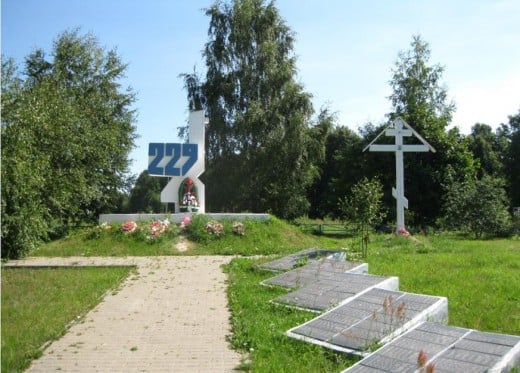
Monuments Appear to be Only Visible Evidence of War Today
Unlike St. Petersburg during my 1969 visit, I haven't seen any remaining evidence of war damage nor heard people talking about their experiences during the war.
Veliky Novgorod today is a vibrant city focused of the present and future. However, it is proud of its historic past including the sacrifices a previous generation made during the Great Patriotic War (WW II).
Those heroes and events are not only on display throughout the city but are kept decorated with fresh floral displays as shown in the pictures. Upon close inspection one can see that the huge floral bouquets decorating these monuments consist of longer lasting silk flowers rather than real flowers although some flowers are real (note the roses in the barrel of the tank in the Kovalevo Field monument.
However, whether real or silk, the bouquets are changed regularly and always look fresh. In addition to being frequently visited by residents and tourists, these monuments are also popular backdrops for newlywed's wedding photos (this is not unique to Veliky Novgorod as World War II memorials are popular wedding photo sites throughout Russia).
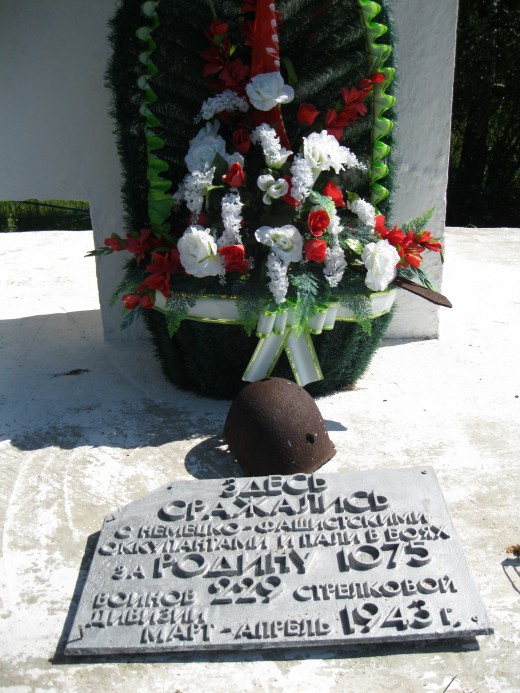
Monuments Memorialize Heroic Acts
The first two photos above are of the statute of Leonya (Leonard) Golikov, a teenager from Veliky Novgorod who died fighting the Nazis as a member of the underground resistance forces fighting the Nazi occupation.
This statute sits, surrounded by beautiful gardens, in the middle of a park located behind the building housing those in charge of administrating the Novgorod Oblast.
My wife remembers reading in school as a child of his exploits. As a Hero of the Soviet Union, his story was taught in schools. While doesn't remember any specifics, I am sure there are some great exploits which will provide me with material for future Hubs once I research his story.
The next two photos (second one is at the right) are a monument to a battle fought on the grounds of a monastery in a nearby village. According to my Father-in-Law, the bodies of 175 men who died in this 1943 battle are buried in the grounds around the monument.
The picture at the right shows a rusting helmet, which has 2 bullet holes in it, sitting on the base of the monument. Not shown in the photo, is a rusting artillery shell which also sits on the base of the monument.
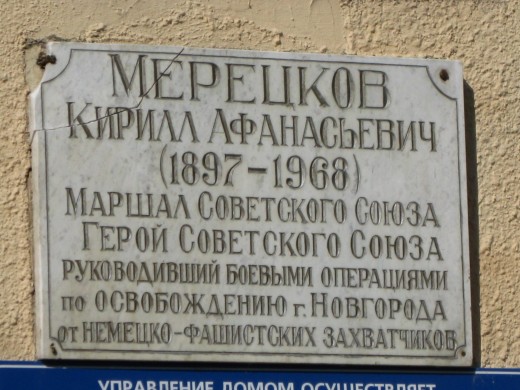
The next two photos show a plaque, and the building on which it is mounted, honoring Soviet Army Marshal Kiril Meretzkov who led the forces that finally liberated Veliky Novgorod from Nazi rule.
The next two photos show a monument, and a tank that sits next to it, which is located located on the Kovalevo Field just outside of Veliky Novgorod.
According the the description accompanying the monument this spot, which is now a little park with other evidence of war, the monument marks the location where the Soviet Army held their ground against the Nazi forces from 1941 to 1944 as they fought to liberate the city.
The next two photos show the Eternal Flame that burns in front of the memorial honoring those who died in the war. This memorial is located along the east wall inside the Kremlin in Novgorod.
The second of the two photos shows a newly married couple preparing to have their pictures taken by the memorial. As I mentioned above it is common throughout Russia for many couples to pay their respects and have their wedding portraits taken by monuments honoring those who gave their lives in the Great Patriotic War.
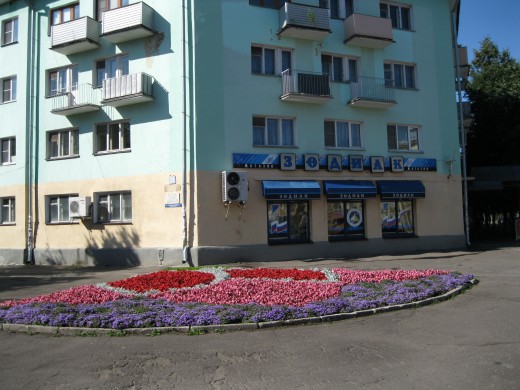
The next photo is located in a historic park area directly opposite the Kremlin on the other side of the Volkhov River. This monument honors three Veliky Novgorod men who sacrificed their lives by throwing themselves in front of the oncoming Nazi guns thereby slowing the advance.
I have yet to discover the specific details of their act, but their actions seemed to be a calculated move which apparently slowed the Nazi advance sufficiently to save the lives of a number of others.
The final photo is of an apparently new, it appears to be still under construction, monument located in a park about a half mile south of the Alexander Nevskiy Bridge over the Volkhov River and just past the Alexander Nevskiy statute at the end of a park along the river.
While World War II (the Great Patriotic War) was the major event of the twentieth century, it was not the only war claiming Russian lives. The ten year, 1979-1989, war in Afghanistan (which I discussed in my Hub reviewing of the movie Charlie Wilson's War) claimed the lives of a number of Soviet soldiers.
Many in Veliky Novgorod, like those in many other Russian cities, obviously lost sons, brothers and husbands in this conflict and the city is honoring and remembering these men as well.


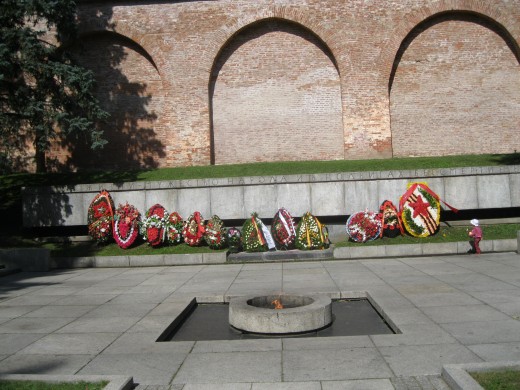
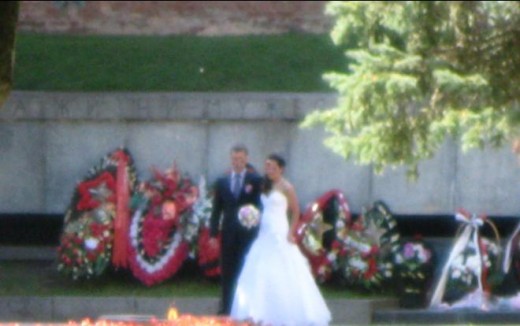


This content is accurate and true to the best of the author’s knowledge and is not meant to substitute for formal and individualized advice from a qualified professional.
© 2011 Chuck Nugent








